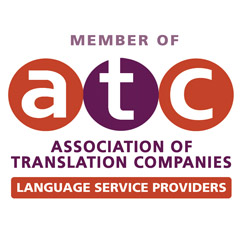Introduction
In today’s globalized world, reaching out to diverse markets is essential for business growth. For companies eyeing expansion into South America, understanding the local culture and language is paramount. One of the most effective strategies to increase sales in this region is by investing in Spanish translation services.
Understanding the South American Market
South America is a continent rich in diversity, comprising various cultures, languages, and traditions. However, Spanish stands out as the dominant language spoken by a significant portion of the population. With over 400 million native speakers, Spanish is not just a means of communication but a powerful tool for businesses to connect with potential customers.
The Power of Language in Marketing
Language significantly impacts consumer behavior, as evidenced by research indicating that individuals tend to interact more with material presented in their mother tongue. By communicating in Spanish, businesses can build trust and establish a deeper connection with their target audience, ultimately leading to increased sales and brand loyalty.
Benefits of Spanish Translation
Investing in Spanish translation offers numerous benefits for businesses operating in South America. Firstly, it opens up access to a wider audience, allowing companies to tap into markets that were previously inaccessible. Moreover, it enhances the overall customer experience by providing information in a language that customers understand and feel comfortable with.
Challenges of Translation
While the benefits of Spanish translation are undeniable, businesses must also navigate various challenges. Cultural nuances and differences in dialects can impact the effectiveness of translation efforts. Moreover, there is a distinction between translation and localization, with the latter requiring a deeper understanding of the target audience’s culture and preferences.
Finding the Right Translation Partner
To ensure successful translation, businesses must partner with reputable translation agencies or professionals. Key qualities to look for include linguistic expertise, cultural sensitivity, and a track record of delivering high-quality translations. Accuracy is paramount, as even minor errors can undermine the credibility of the brand.
Implementing Spanish Translation Strategies
Effective translation strategies go beyond simply converting text from one language to another. It involves website localization, translating marketing materials, and providing customer support in Spanish. By tailoring content to the preferences of the target audience, businesses can maximize their impact and increase sales.
Case Studies
Several businesses have successfully leveraged Spanish translation to expand their presence in South America. Companies like XYZ Corporation and ABC Inc. have seen significant increases in sales and brand awareness after implementing comprehensive translation strategies. These case studies serve as proof of the effectiveness of Spanish translation in driving business growth.
Measuring Success
Measuring the success of Spanish translation efforts requires careful analysis of key performance indicators (KPIs). This involves monitoring website traffic, conversion metrics, and gathering insights from customer feedback. By monitoring these metrics, businesses can gauge the impact of their translation initiatives and make informed decisions to optimize their strategies.
Continuous Improvement
The landscape of language and consumer preferences is constantly evolving. Therefore, businesses must continuously refine their translation strategies to stay relevant and competitive. This involves adapting to market changes, incorporating feedback from customers, and investing in ongoing training for translators.
Cost-Benefit Analysis
While investing in Spanish translation incurs upfront costs, the long-term benefits far outweigh the initial investment. By increasing sales, improving brand perception, and fostering customer loyalty, Spanish translation offers a significant return on investment. Businesses should view it as an essential component of their expansion strategy rather than a discretionary expense.
Tips for Effective Translation
Consistency is key when it comes to translation. Businesses should maintain a consistent tone and messaging across all translated materials to ensure brand coherence. Quality assurance processes, such as proofreading and editing, are also essential to eliminate errors and ensure accuracy.
Conclusion
In conclusion, Spanish translation is a powerful tool for businesses looking to increase sales in South America. By understanding the local language and culture, companies can forge stronger connections with customers and gain a competitive edge in the market. Investing in high-quality translation services is not just an expense but a strategic investment in long-term success.
FAQs
1. How long does it take to see results from Spanish translation?
– Results can vary depending on various factors such as the quality of translation, market conditions, and the industry. Generally, businesses can expect to see improvements in brand awareness and sales within a few months of implementing translation strategies.
2. Can machine translation be as effective as human translation?
– While machine translation has improved significantly in recent years, it still lacks the nuance and cultural sensitivity of human translation. For important business communications and marketing materials, human translation is recommended to ensure accuracy and quality.
3. What industries can benefit the most from Spanish translation?
– Virtually any industry can benefit from Spanish translation, but particularly those in e-commerce, tourism, hospitality, and consumer goods. These industries rely heavily on effective communication with customers and can significantly expand their reach through translation.
4. How do you handle slang and colloquialisms in translation?
– Translating slang and colloquialisms requires a deep understanding of both languages and cultures.




